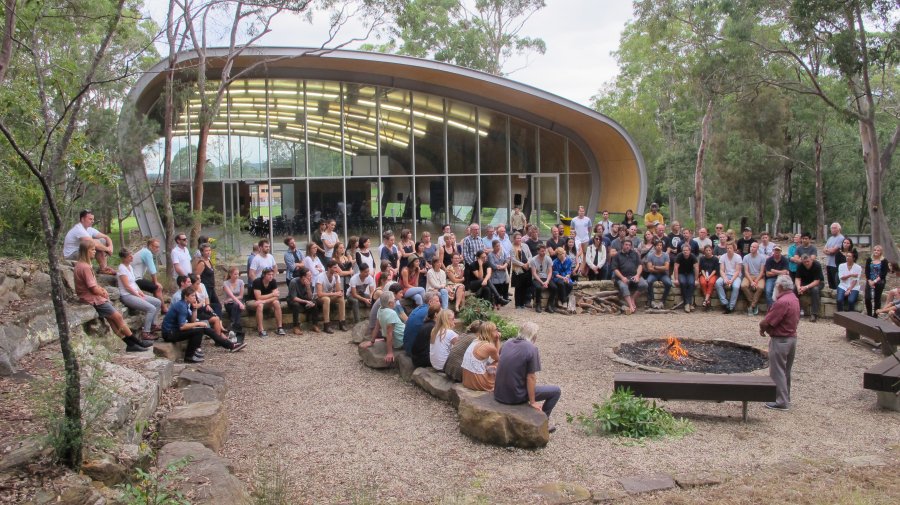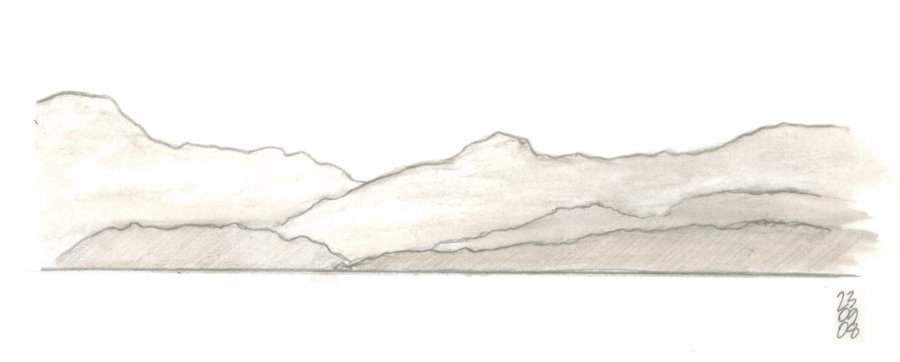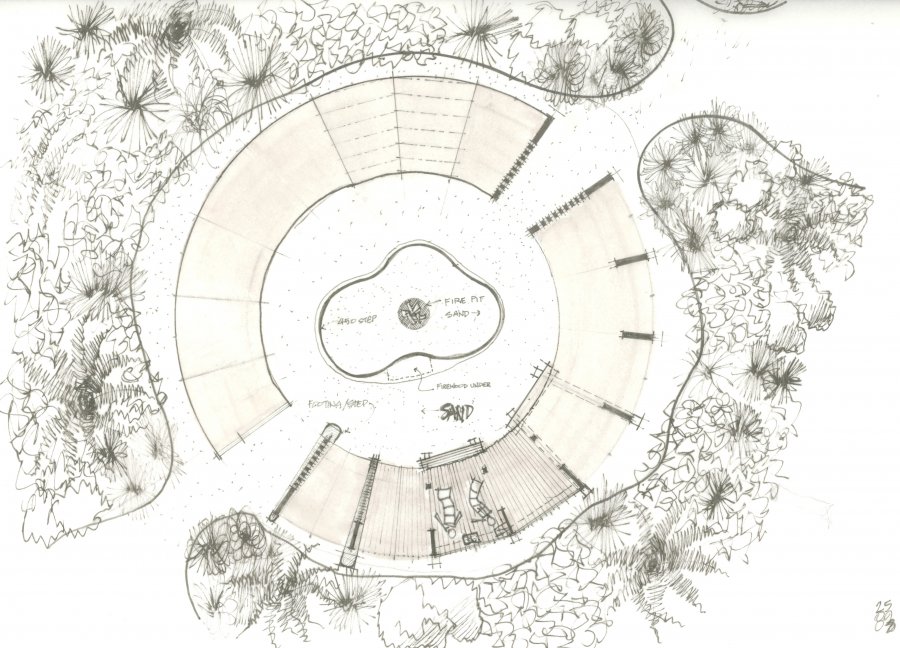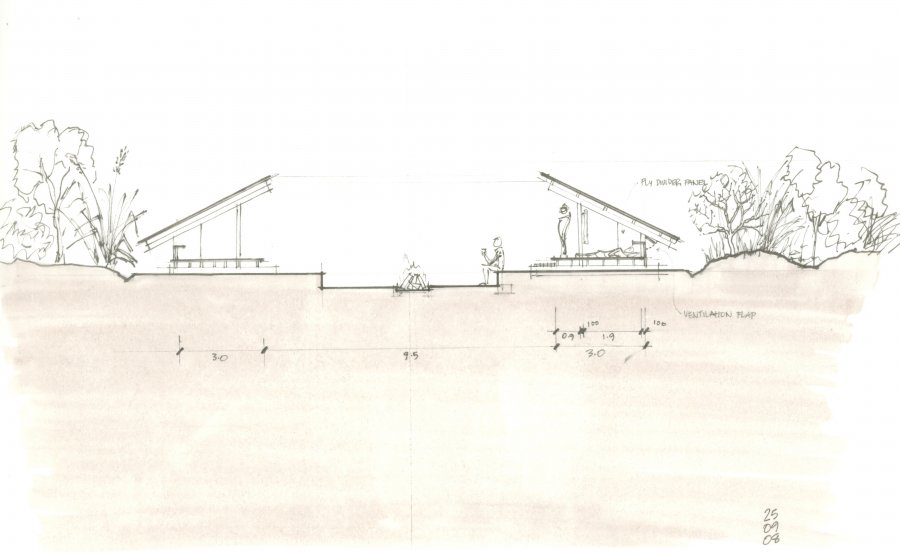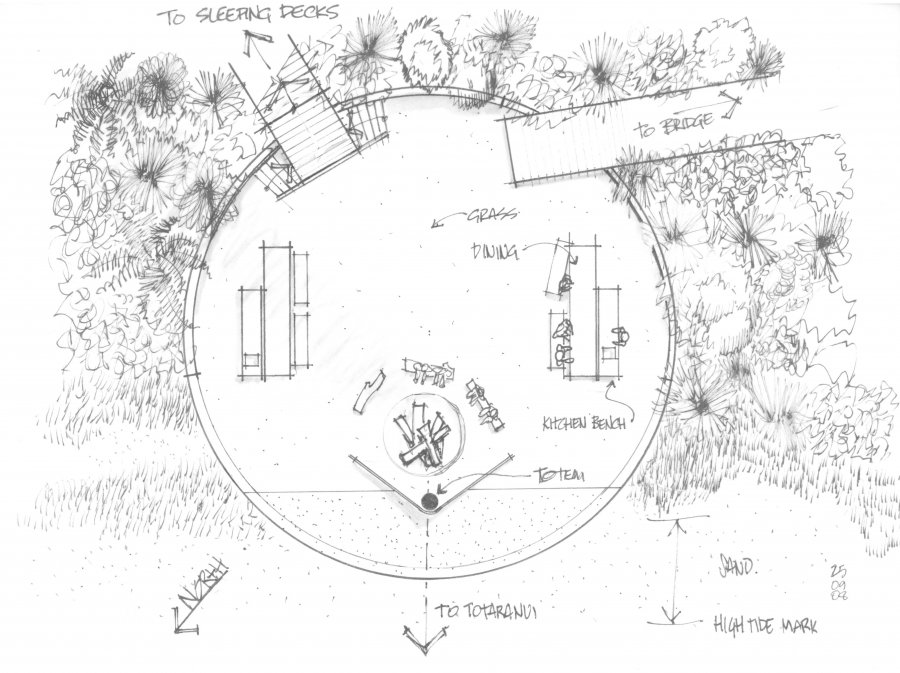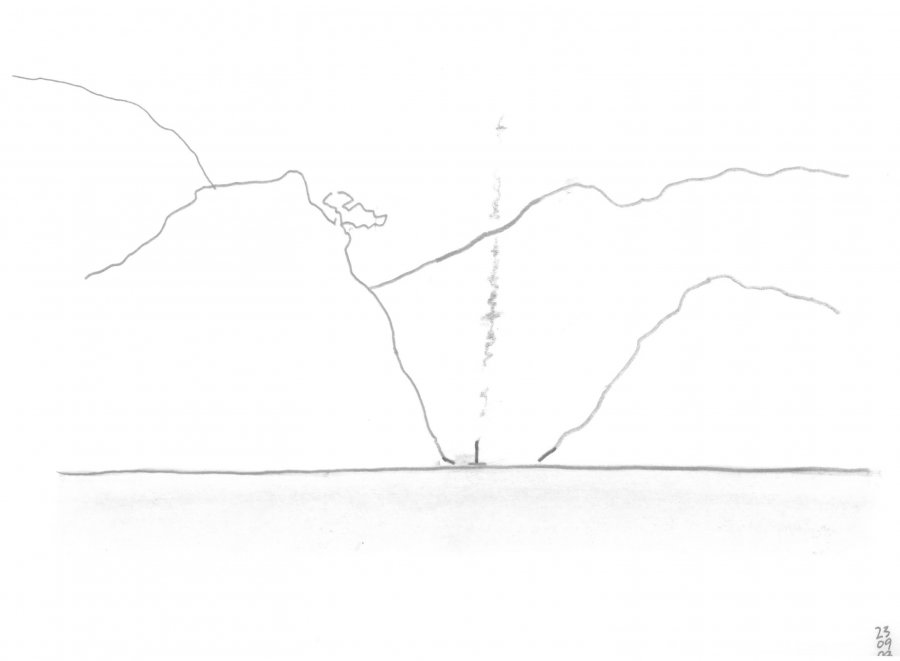Awaroa Masterclass Stutchbury & Leplastrier
Christina and I were recently at a small conference on Milson Island, on the Hawkesbury River, north of Sydney. The weekend included various speakers but at its centre were the Australian architects Peter Stutchbury and Richard Leplastrier and the primary organisers Lindsay and Su Johnston. The group are the stalwarts of the Architecture Foundation Australia and have organised many masterclasses over the years as well as putting together exhibitions and books.
Today I have been cleaning out the office and came across old drawings from a masterclass in New Zealand where I first met these great characters. That event, back in 2008 was held over a week at the Awaroa Lodge, in the beautiful Able Tasman National Park near Nelson, New Zealand. Ian Athfield was a co-leader with Richard and Peter, in what was home territory for him. He has a bach and a ‘boat shed’ near the lodge and knew the area intimately.
An architectural masterclass is a bit of a busman’s holiday where a design exercise is set and participants work away at it with guidance and ‘crits’ from tutors and other participants. In the evenings there are slideshows, drinking and partying.
The walking track through the Abel Tasman National Park has a point where trampers must cross the Awaroa Inlet in order to continue towards Totaranui. Because the inlet is tidal there is only a short period around low tide in which this is possible. Consequently the crossing point requires both a place to wait and (for those who don’t make the crossing before nightfall) a place to camp.
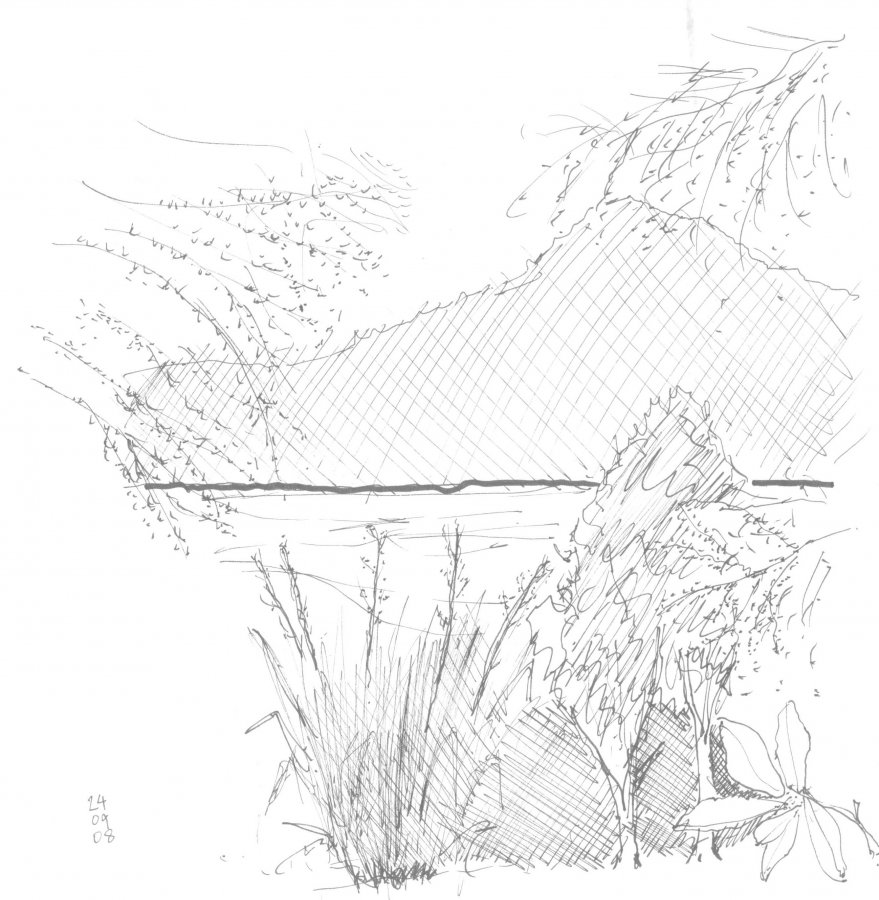 The existing situation is an uninspiring lawn for waiting and a separated series of clearings to accommodate tents. The setting however is majestic by virtue of the broad tidal inlet surrounded by mountains.
The existing situation is an uninspiring lawn for waiting and a separated series of clearings to accommodate tents. The setting however is majestic by virtue of the broad tidal inlet surrounded by mountains.
This project proposes a new shelter for overnighters and a new outdoor area to use while waiting during the daytime.
In the camping area it is proposed that one of the clearings has a permanent bivouac built that can be used by campers who don’t wish to set up tents. The structure is circular in plan and surrounds a sunken communal fire. It is essentially open towards the centre and closed toward the outside except for a ventilation hatch. By being circular it is possible to choose a location to occupy that is sheltered from any wind, whichever its direction. Each segment of the structure can accommodate two people on the raised timber deck and there is a simple internal timber fin that provides a minimum of privacy between the segments.
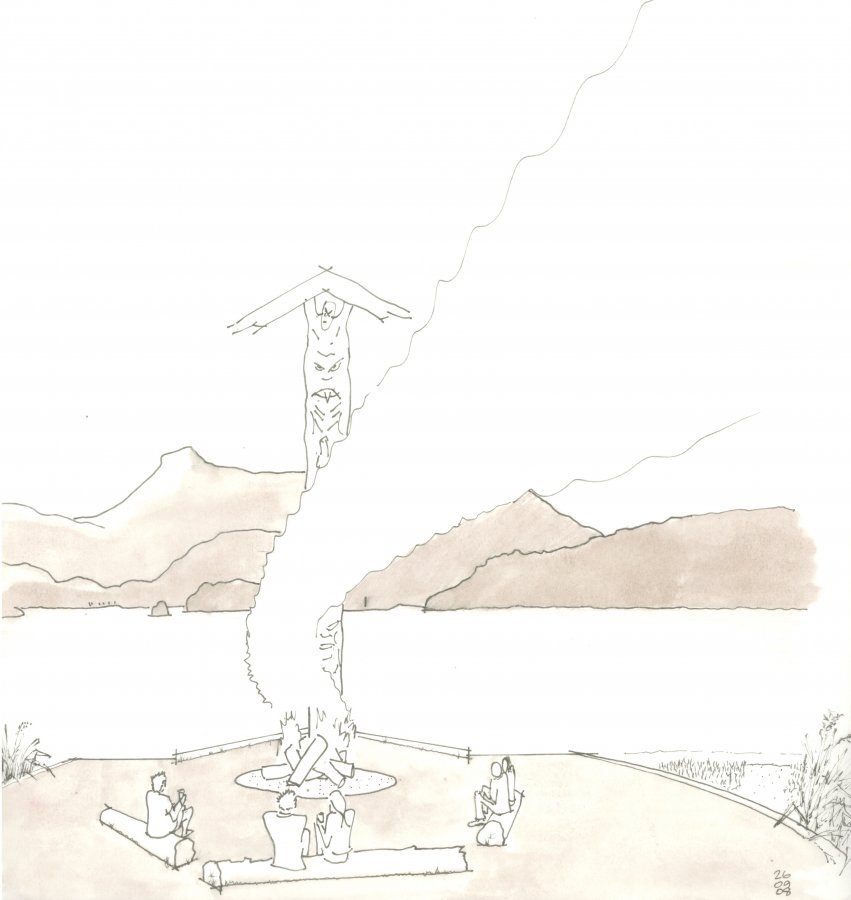
Waiting area looking south.
In the area where trampers can wait to cross the circular form is repeated to create a clearly delineated grassed area with a fireplace and pouwhakarae that gazes across to the other side of the inlet where the track begins again. Furniture is kept simple and moveable and there is a simple roof structure that shelters a food preparation bench.

